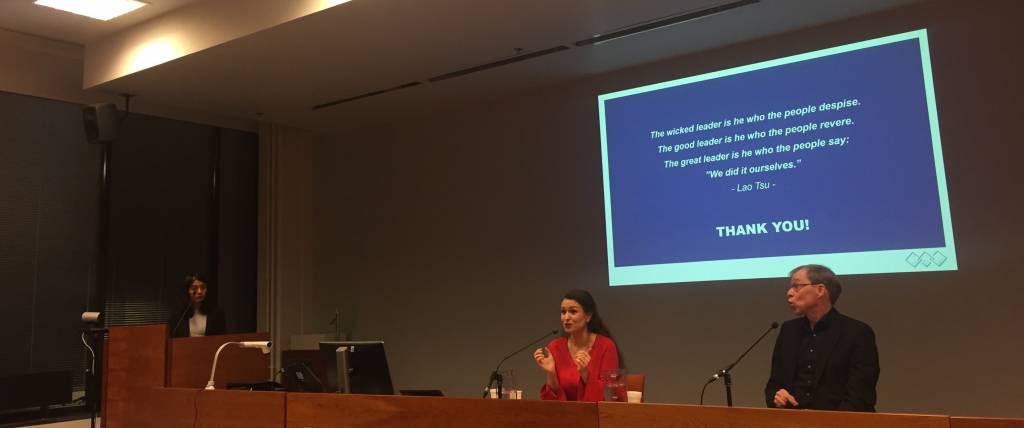How do complex challenges appear from the perspective of city leadership? This was the topic of the LFC Lecture by Dr. Anna-Kaisa Ikonen, Professor of Practice in the UTA Faculty of Management and former Mayor of the City of Tampere. Dr. Ikonen shared the insider’s point of view with the audience presenting her ideas on leadership in the public sector and the role of the mayor in city leadership. At the end of the lecture, Dr. Markku Sotarauta, Professor in the Faculty of Management, commented on Dr. Ikonen’s lecture from the perspective of current academic research.
Cities at the forefront of change
Our life changes from day to day and all of these changes affect cities as well. Urbanization, digitalization, climate change, segregation, changes in values, habits or working life are all examples of major changes that are taking place in the world and that manifest themselves in the cities in specific ways. Cities are also faced with changes such as governance reforms, new forms of democracy and circular economy. Dr. Ikonen argued that these surrounding transformations affect cities in two ways: cities need to change themselves and they need to lead the change.
To bring the idea of change to life, it is necessary for cities to overcome some barriers: the structure, knowledge and culture. Dr. Ikonen emphasized the importance of a clear governance structure and, as a result, clear responsibilities in leading a city. Another key point is the role of culture of partnership and co-creation within the organization. The personnel and citizens are not just customers anymore. They are partners who are involved in the discussion and decision-making processes. The locus of leadership changes from governing to companionship resulting in co-creation as a new model of work.
To illustrate the process of building a meaningful city following the model of partnership and co-creation, Dr. Ikonen gave the examples of the Tampere tramline and Tunnel projects. These are examples of involving citizens and inhabitants of the city in decision making processes. Also, Dr. Ikonen pointed out that good leadership in complex and changing environment needs to be focused and show clear direction. She convincingly argued that direction is a crucial part of leadership.
City leadership and cities as leaders
As to the leadership of cities, Dr. Ikonen argued that the largest cities in Finland — Helsinki, Tampere or Turku – can definitely influence national politics. However, perhaps the most influential way for cities to show leadership is to act as a part of international networks of cities.
Dr. Ikonen concluded the lecture by sharing her views on the role of the mayor in leading change. What kind of a leader should a mayor be? She stated that a mayor should be: a CEO, to inspire people; a village chief, to let people to participate in their community; and a bridge builder, to build “smart cities”.
Professor Markku Sotarauta added to Dr. Ikonen’s arguments the perspective of power and influence. Professor Sotarauta, the author of books such as Leadership and the City, reminded that while we talk about doing things together and citizen participation, there are power imbalances between different actors. It is thus important to ask questions such as: Who has the power to spend the money? Professor Sotarauta also noted that in Finland, the city governments differ from place to place, and local leaders may have significant influence and weight. They have to deal with more and more challenges such as healthcare and social problems, finding investors and negotiation between different political groups. These and other challenges can be successfully solved through network leadership, proactive governance and clear strategy by city leaders.
Written by Hongchuan Chen, Yesselin Hermano and Mariia Kangasmiaki



Comments